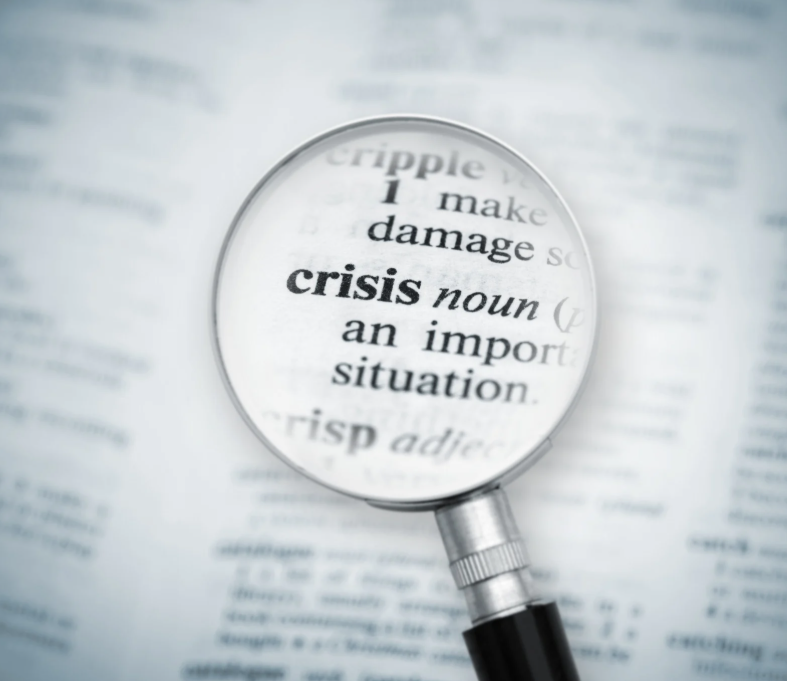
6 Things You Need to Protect Your Brand in a Crisis
All organisations will at some point encounter a crisis that they will need to navigate their way through. Whether that’s brought on by poor corporate performance, the behaviour of an employee, or a scenario that’s completely out of the business’s control, and is driven by external factors. Regardless of the situation, the onus is on marketing and communications specialists to protect their employer and ensure there is no lasting damage. But what do companies need to do to protect their brand in a crisis?
Potential crises can come in all shapes and forms, and some are less common than others. Few organisations would expect their CEO to criticise their products in the way that Gerald Ratner, former managing director of the eponymous jewellers, did in the 1990s, for example. Equally, it could be a deeply entrenched, institutional-level issue like the Post Office Horizon IT scandal. Regardless of the nature of the crisis, these problems have a way of exposing the true character and integrity of a brand and are the moments that truly test operational strength and resilience. Many firms may have been fortunate enough to avoid a crisis so far, but they should not necessarily confuse good luck with readiness, and those that can weather the storm most effectively are not always the most powerful. Instead, they tend to be the companies that are prepared and have a clear plan in place for how to act when they are under the spotlight and, crucially, a team to deliver this.
There Are 6 Key Factors to Keep in Mind to Protect Any Brand From a Crisis:
Plan, Plan & Plan Again
This doesn’t just mean having a plan written down and stored in a (virtual) dusty corner somewhere; true preparedness means having mapped out a range of scenarios and potential responses to different types of crises and disseminating them throughout the organisation so that everyone knows what to do should the worst happen. In practice, communications teams should include a range of stakeholders from different departments and build out a roster of relevant, potential spokespeople whom they can call upon for each of these potential situations. Being prepared in this way means that a company can react at pace, which, as you will see in a moment, is particularly crucial in any scenario. This also helps to create the right culture in the business of readiness and preparedness; an organisation’s ability to act quickly, communicate with clarity and lead the situation often stems from the values that are in place long before the crisis actually happens.
Speed Matters…but Not at the Expense of Facts
Social media and 24-hour rolling news have meant that time is certainly not on the side of marketing and communications teams looking to respond to a crisis. Most major news outlets and, indeed, internal and external stakeholders, will expect a response quickly, and being able to do that effectively is only possible with a relevant plan in place. However, speed should not compromise quality. No company can afford to move so quickly that they end up sharing misinformation, contradictions or the wrong messaging. The best approach is to start with an acknowledgement and confirm that the business is aware of the issue, which also buys time to develop a fuller and more detailed response. The last thing any business should do is hide; silence, in a crisis, can often be seen as an admission of guilt or incompetence.
Listen to the Market
Media monitoring is invaluable for all external communications activity, but it also has a role to play in crisis management, and the best professionals will be able to identify the early warning signs of a crisis, before it’s even fully come into play. Aspects like spikes in negative sentiments, trickling social posts that suggest problems are approaching, or even flurries of questions around a single topic can all be enough for professionals to raise the alarm, and allow the organisation to prepare. Even after the crisis has taken hold, marketing and communications specialists should continue to monitor wider sentiments and adapt their approach accordingly.
Opt for an Empathetic Tone
There are countless examples of organisations attempting to ‘push back’ when faced with a crisis, and in all but the most extreme examples, this approach is usually highly ineffective. Tone is as important as content, and whether those affected are customers, partners, employees or the public, they need to feel as if they are seen and heard. An empathetic tone – coupled with action, of course – does far more to rebuild trust than fighting back ever does. This doesn’t need to be overly emotional, but aligning the response with the human experience of the people that have been affected can lessen the impact and invite potential support, rather than drive further conflict.
Choose the Right Level of Transparency
One of the key results of a crisis for affected groups is uncertainty, and people will usually want answers, particularly if the issue could impact their personal data, as we have seen with the recent data breaches at several leading retailers. Transparency and being open about the problem can go a long way and prevent both stakeholders and the media from making assumptions about what has gone wrong. It should be a guiding principle; even if there is nothing new to say, a simple holding statement outlining that the problem is being analysed and a further update will follow, will enable groups to appreciate that efforts are being made. However, this doesn’t mean revealing the warts-and-all situation that has led to a crisis, and sometimes knowing what not to share is as important as what to say. Rather than airing internal debates, arguments or errors, providing a realistic view of the response helps to show accountability and, again, can help to build trust in the brand.

Think Digital
While in the past the main battleground for organisations reacting to a crisis would be the traditional media, now it’s social channels. Marketing and communications teams can no longer rely on a simple press statement, and instead will have to be active on multiple fronts. Reactions now happen in real-time, and on the likes of X and Instagram. News moves exceptionally quickly, meaning specialists should also incorporate social and digital teams into their crisis management. They must form a core part of the group responsible for responding to issues and therefore need access to the same information that others who have to direct or answer high-volume queries could follow.
It's unlikely that any crisis will be straightforward, but having a plan in place makes the period after it occurs far more straightforward to manage. Post-crisis reflection can also play a valuable role, and analysing what went well and what could be improved will make the next issue much easier to deal with. The goal shouldn’t be to be fully crisis-proof; that is unrealistic. Instead, organisations and their dedicated marketing and communication teams should aim to be crisis-ready and prepared to tackle a variety of eventualities in order to safeguard their brand in the long term.
Crucially, the above can only be delivered with the right people on board. If your business is seeking marketing and communications professionals with the skills and ability to navigate a crisis and help the business emerge stronger in the aftermath, get in touch with our specialist team to find out more.
*****
